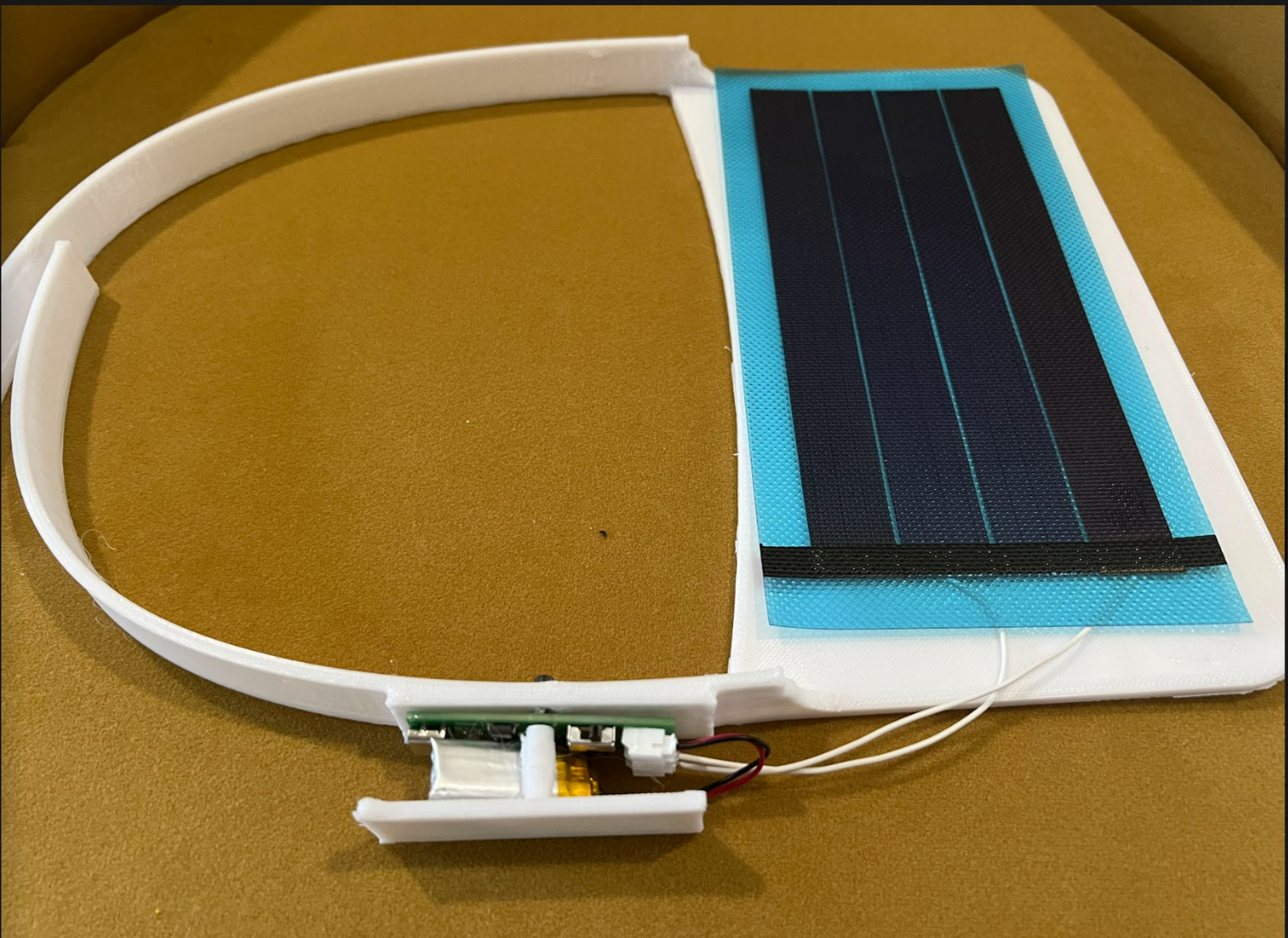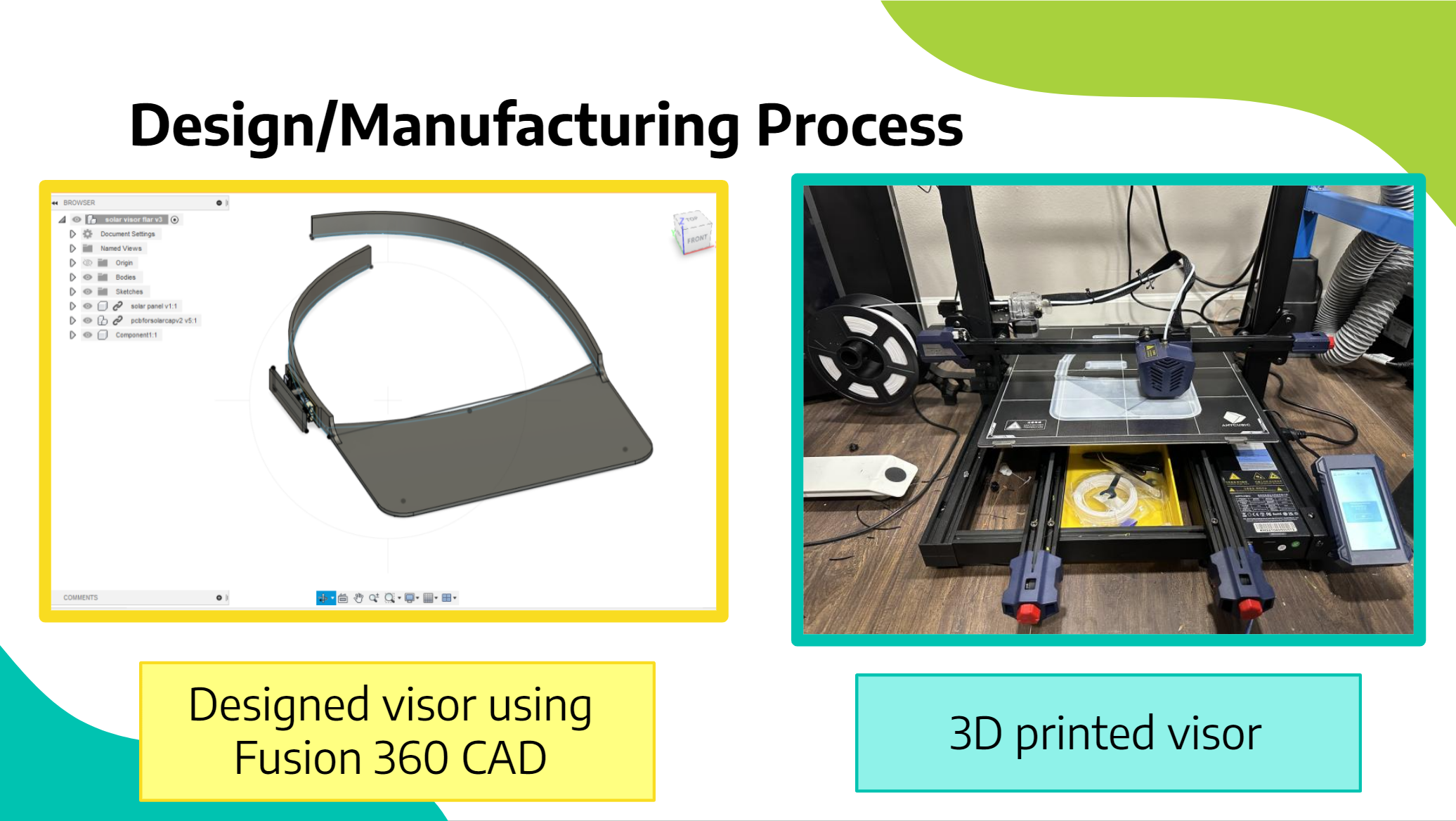Our visor integrates revolutionary technologies such as LoRaWAN, Helium network, datacake integration to provide GPS tracking and phone charging using Solar power. It was developed using Fusion 360. All the required 3D and electronics design files are posted here for you to build it following the build instructions.
We were inspired to do this project after a hike we did few months back. We lost our way, and our phones were starting to run out charge.
With 58 million of the US population enjoying hiking the risk of an accident while your phone is out of charge could be fatal. The very apps that hikers use to navigate, are the apps that drain the most battery due to the need to connect to distant cell towers.
We went through multiple prototypes over the last one year to get here.
The technologies we used in this project include LoRaWAN, which is a low-power, long-range wireless communication protocol designed for Internet of Things (IoT) devices, allowing devices to communicate with Internet-connected applications over large distances with minimal power consumption. We used the Helium network for LoRaWAN. Helium is a revoutionary network powered by gateways installed by milions of people around the world as a way to crypto mine the Helium cryptocurrently. We also included a GPS tracker chip + SOS button, which allow hikers to notify people of their location in case of an emergency. We also used datacake, which is a platform for developing IoT applications. It provides dashboards that can be customized to present data from IoT devices. When the Visor SOS button is pressed, the RAK3172 module in our visor sends the location using Helium network.
In summary, here are the technologies used:
1. LoRaWAN: Long Range Wide Area Network. It is a new wireless standard for low power IoT devices
2. Helium: Worldwide network of 1M LoRaWAN gateways that provide connectivity in urban and remote areas
3. GPS: Global Positioning System is a satellite based navigation used for accurate positioning
4. DataCake: website platform that provides ability to create dashboards to show data from IoT devices


